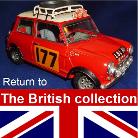
1959 Triumph Herald 948cc Saloon
1959 was a notable year for the British motoring public as the Austin Mini, the Ford Anglia 105E and the Triumph Herald were all launched into the very competitive small saloon car market. The first to meet the public was the Triumph Herald.
The Coventry based company Triumph began making bicycles in 1887 and like many of the early cycle manufacturers they moved into motor cars. The earliest Triumphs were mainly conventionally engineered and conservatively styled small and medium-sized saloons. Sporting models were introduced in the early 1930’s but too many models and too much competition bankrupted Triumph in 1939; the company was eventually sold in 1944 to Standard Motor Company Limited. In 1959, the company renamed itself as Standard-Triumph International Limited.
The highly successful 2-seater TR-series sports cars re-established the marques reputation, both at home and abroad, and persuaded Standard-Triumph to badge all future models as simply, “Triumph”. Triumph flourished as the sporting arm of Standard-Triumph while the Standard name stood alone for saloon cars and the parts manufacturing side of the business.
While Standard-Triumph had been doing rather well with their saloon car range competition from the Morris Minor, Ford Popular and Austin A35 was making inroads into the sales of Standards. The range really needed a lift as the rather dumpy looking Standards didn’t seem to be appealing to customers any more. Standard-Triumph began the process of designing a new car.
The choice of name suggests the car was originally intended for marketing as a “Standard”.Their range had the Ensign, Pennant and Standard itself, so "Herald" fits the bill as a Standard car. Triumphs were TR-#… not names.
Replacing the small Standard saloons with something that could better the competition was going to need something as new and modern as could be managed within a reasonable budget and timeframe. The Standard-Triumph board commissioned Italian designer Giovanni Michelotti to style the car, working in conjunction with chief engineer Harry Webster. He soon had a modern stylish two-door saloon design down on paper, it combined aspects of American fins and accents with a more recognisably British Standard Triumph sports car lines and grill, Italian flair and most importantly, such a large expanse of glass as to give the driver 93% all-round visibility.
With the looks pinned down the mechanics had to be considered. The mechanical parts and construction process choices were a curious mix of old and new. For instance, all round independent suspension (new), was mounted on a solid chassis frame (old).
While most cars now used the unitary monocoque form of body Standard-Triumph chose to use a separate chassis right from the start of the design process. This proved to be a clever idea in that all the panels, including the sills and the roof, were bolted together, and, bolted to the chassis. This facilitated panel replacement in the event of an accident but more importantly meant that all the different body styles, coupé, saloon convertible estate and van (Triumph Courier) models, could be easily produced on the same chassis. Another design feature which critics liked was that the whole front end tilted forward giving unprecedented levels of access to the engine.
The Triumph Herald was officially presented to the motoring press at the Royal Albert Hall on the 22nd of April 1959. Comedian Bob Monkhouse hosted an event at which 1,500 invited guests were wined, dined and entertained before Triumph Herald branded shrouds were removed from the cars in the middle of the hall. There was even a special twist in that a car was built right in front of those present, who were delighted when the car started and demonstrated its impressively small turning circle.
The Public launch was at the Earls Court motor show and the sharp modern styling, light interior, carpeting and heater as standard, all struck a chord with the buyers. But the price tag proved to be a stumbling block, almost £700 (including Purchase Tax); sales took time to build.
The motor from the Standard 10 and Pennant was used to propel the new Herald cars. A 4-cylinder 948cc OHV engine mated to a 4-speed manual gearbox with synchromesh on the top three gears. The rack and pinion steering was light and precise and the tight 25-foot (7.6 m) turning circle was as good as a London Taxi.
The suspension was by double-wishbone with coil springs at the from and "limited" independent at the rear provided by the single transverse leaf-spring bolted to the top of the differential and swing axles. Shock absorption was by telescopic dampers all round.
Instrumentation was sparse, a single large speedometer incorporated the fuel gauge, a temperature gauge was an optional extra. The dash’ was a grey pressed fibreboard, somewhat bland and later models were enhanced by wood veneer.
One quirky item under the dash on the passenger side was a unique parcel tray supplied in the absence of a glove box. Nicknamed the ‘chip basket’ the Sankey grey plastic-coated wire basket was hinged under the dash and held in place by a single metal clip, backed up by plastic straps to stop it falling all the way open and depositing maps, magazines and such all over the passenger and/or floor.
A good range of bright modern colours complimented the body shape and optional extras like twin SU carburettors, front disc brakes, Telaflo shock absorbers, leather seats, a wood veneered dashboard, and later a sunroof, gave the Herald purchaser an opportunity for a thoroughly modern looking car.
While the Herald looked good, was easy to drive and had some impressive features, it also came with problems. The bolt on body system was great for repair work but the flexible nature of this structure resulted in lots of creaks, groans and thumps. When pushed to the limit the rear suspension gave poor handling at the rear, in its original standard single carburettor form the engine yielded only average performance. 0-60mph took around anything up to 30sec’s and top speed was little more than 70mph. Fuel consumption was equally average at 36.4 miles per imperial gallon.
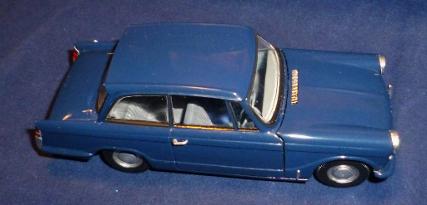






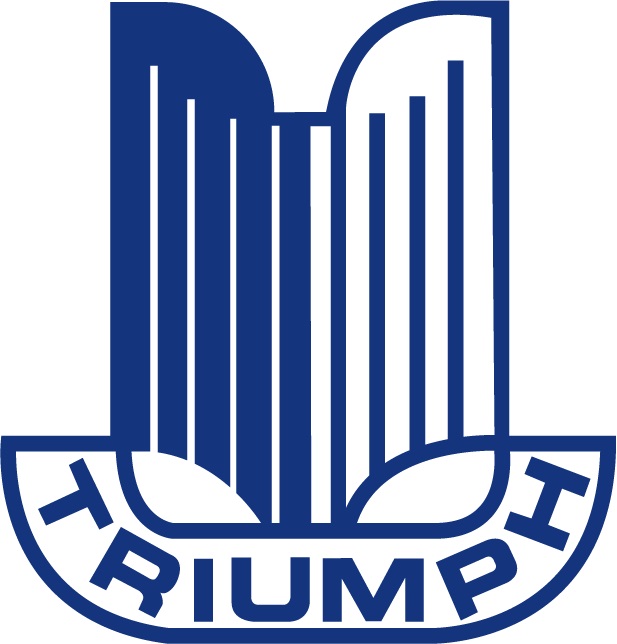
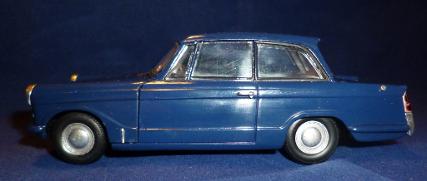




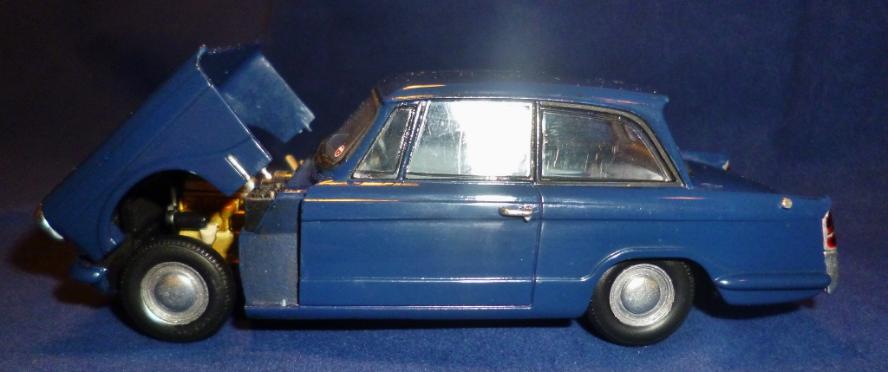
THE KIT
This model was built from Airfix kit #A55201, released in 2011 set, which had six paints, two brushes and the precision applicator glue. What is strange is that in 2012 Airfix released another starter kit, #A55201, which included six paints, a brush and a tube of glue. Tube glue, rather a backward step and not the greatest way to encourage modellers new to the hobby.
The Herald was also released in the three-car set, Airfix # 07900, in 1991. The set included the Triumph TR4, Triumph Herald, Ford Escort and was a very good value for money set.
The original kit, #M204C went on sale in 1967 in a plastic bag with a header card. The Plastic is the same in all the kits, as is the actual pictures and illustrations. The changes are the addition of endless language warnings and guidance notices and a small decal sheet.
A lovely kit for 1967, loads of detail and generally a very good representation of the Herald. There is evidence of the age of the moulds as flash, slight misalignment and ejector pin marks are evident all over the model. However, most of these are well hidden or easily dealt with. This particular kit had some warping to the body making it rather bulbous; a problem easily corrected when the body was attached to the chassis. Overall, even for the age of the moulds, this is still a great kit.
The biggest difficulty with these older kits is the fit of the clear parts which need some help to fit nicely and look good. Deluxe Material’s Glue’n’Glaze proves very helpful. The lack of clear headlamp lenses is something of a let-down in this day and age, it wouldn’t have been that hard to put some lenses in or add the parts to the clear sprue as well as the grey plastic sprue.
Ian built this model straight from the box in January 2019. It is a contrast to the highly detailed Coupe conversion he finished in November 2018. It is painted with Deco-Arts and Zero gloss for the body, applied by airbrush. The interior is brush painted with Deco-Art and Citadel acrylic paints, applied with a brush. All colour is over Zero Paints grey primer or Alclad II white primer.
Onethirtysecond releases
Back in the 1980s a company called Onethirtysecond released several body style transkit conversion options for the Airfix kit and slot car racing. These included:
1962 Triumph Vitesse 1600 (Onethirtysecond 60/004)
1968 Triumph Herald 13/60 (Onethirtysecond 60/003)
Chassis kit for Triumph Herald 13/60 (Onethirtysecond CHA/001)
Chassis kit for Triumph Vitesse 1600 (Onethirtysecond CHA/002)
RETURN TO :-
